High pressure transmitters with 4 to 20 mA current output for measuring hydraulic pressure greater than 100 bar (1500 psi) with a range of accuracies, electrical interfaces and pressure connectors. High pressure transmitters are used to measure hydraulic pressures on process control & automation equipment.
High pressure milliamp current output transmitter for measuring hydraulic pressures on material testing machines, actuation control systems, pressure rating test equipment, lifts, elevators, cranes and heavy lifting equipment.
Products
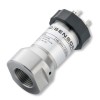 DMP334 Hydraulic Pressure Transducer for Very High Pressures - DMP 334 is a high range pressure transducer designed for measuring hydraulic pressures up to 2200 bar (32,000 psi) .
DMP334 Hydraulic Pressure Transducer for Very High Pressures - DMP 334 is a high range pressure transducer designed for measuring hydraulic pressures up to 2200 bar (32,000 psi) . TPSA Precision High Pressure Transducer - High pressure transducer for pressure testing applications with pressure ranges from 0...4 bar (60 psi) up to 0...1000 bar (15,000 psi) gauge with a measurement accuracy of 0.1%.
TPSA Precision High Pressure Transducer - High pressure transducer for pressure testing applications with pressure ranges from 0...4 bar (60 psi) up to 0...1000 bar (15,000 psi) gauge with a measurement accuracy of 0.1%.
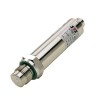 ATM/T Pressure and Temperature Dual Output Transmitter
ATM/T Pressure and Temperature Dual Output Transmitter DMP 335 All Welded Stainless Steel Diaphragm Pressure Sensor
DMP 335 All Welded Stainless Steel Diaphragm Pressure Sensor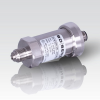 DMP 336 Hydrogen (H2) Gas Compatible Pressure Transmitter
DMP 336 Hydrogen (H2) Gas Compatible Pressure Transmitter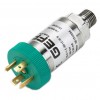 TK Industrial Pressure Transmitter
TK Industrial Pressure Transmitter
Applications
 20,000 psi g digital pressure gauge with 4 to 20 mA output - 4-20 milliamp loop powered high range pressure gauge for measuring 0 to 20,000 psi gauge.
20,000 psi g digital pressure gauge with 4 to 20 mA output - 4-20 milliamp loop powered high range pressure gauge for measuring 0 to 20,000 psi gauge. Mechanical press 1000 bar pressure sensor and panel indicator - sensor and panel mount digital indicator for measuring the overload pressure in a mechanical press
Mechanical press 1000 bar pressure sensor and panel indicator - sensor and panel mount digital indicator for measuring the overload pressure in a mechanical press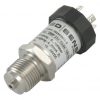 10 ksi g range 4-20mA out high pressure sensor for pumps and actuators bench test rig use - A high range gauge pressure sensor for pumps & actuators bench test rig use to measure pressure of synthetic hydraulic oil over a range of 0 to 10 ksi g from the 1/2 BSP P male process connection, and sending the corresponding 4-20mA signal through the DIN plug electrical connection.
10 ksi g range 4-20mA out high pressure sensor for pumps and actuators bench test rig use - A high range gauge pressure sensor for pumps & actuators bench test rig use to measure pressure of synthetic hydraulic oil over a range of 0 to 10 ksi g from the 1/2 BSP P male process connection, and sending the corresponding 4-20mA signal through the DIN plug electrical connection. Injection moulding machine 22000 psig 4-20mA output synthetic hydraulic oil pressure sensor - A digital display and high pressure sensor for injection moulding machine use to measure pressure of synthetic hydraulic oil over a range of 0 to 22,000 psi g from the 9/16 UNF female process connection, and sending the corresponding 4-20mA signal through the M12 connector electrical connection.
Injection moulding machine 22000 psig 4-20mA output synthetic hydraulic oil pressure sensor - A digital display and high pressure sensor for injection moulding machine use to measure pressure of synthetic hydraulic oil over a range of 0 to 22,000 psi g from the 9/16 UNF female process connection, and sending the corresponding 4-20mA signal through the M12 connector electrical connection.
 2000 bar high pressure water pump 4-20mA pressure transducer
2000 bar high pressure water pump 4-20mA pressure transducer High pressure pump 1600 bar water pressure sensor with 4-20mA output
High pressure pump 1600 bar water pressure sensor with 4-20mA output 1600 barg 4-20mA freshwater pressure sensor for hydrostatic testing
1600 barg 4-20mA freshwater pressure sensor for hydrostatic testing 1000 barg 4-20mA output synthetic oil pressure sensor for hydraulic pump controls
1000 barg 4-20mA output synthetic oil pressure sensor for hydraulic pump controls 5000 psi WECO® 1502 pressure transmitter and loop indicator
5000 psi WECO® 1502 pressure transmitter and loop indicator Alternative 200 bar melt pressure transmitter with T/C
Alternative 200 bar melt pressure transmitter with T/C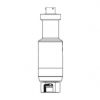 Oil field equipment testing 20,000 psi g 4-20mA out freshwater pressure sensor
Oil field equipment testing 20,000 psi g 4-20mA out freshwater pressure sensor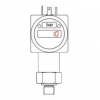 600 barg freshwater booster pump pressure switch, gauge and transmitter
600 barg freshwater booster pump pressure switch, gauge and transmitter
- 600 barg 4-20mA output wastewater pressure sensor for experimental component testing
- 600 barg 4-20mA pressure transducer for mobile crane hydraulic control use
- 6,000 psig ATEX/IECEx IS approved 4-20mA pressure sensor for oil pumping use
- 20 MPa g range 4-20mA output high pressure sensor and plug-on display for hydraulic control use
- 300 barg 4-20mA synthetic hydraulic oil pressure transducer for hydraulic control use
- 600 barg 0-20mA output hydraulic oil pressure transmitter for mobile rail vehicle system controls
- 50000 psig 4-20mA mineral hydraulic oil pressure sensor for chemical processing use
- 3000 psi absolute 0-20mA output mineral oil pressure sensor for hydraulic control use
- 6000 psig range 4-20 mA output ceramic diaphragm pressure sensor
- 300°C max temperature, 0 to 300 bar, high range pressure sensor
- 5000 bar Pressure Transmitter with AE HP fitting
- Military connector ATEX 400 bar hydraulic pressure transmitter
Why do our high pressure transmitters keep failing?
Not all pressure transmitters use the same sensing technology and some are more suited to measuring high pressures than others. It is high pressure spikes that are the most common cause of pressure transmitter failure and they will punch or rip a hole in a diaphragm if the right precautions are not implemented.
Cause of damage
High pressure spikes
High pressure spikes are typically generated in hydraulic systems where fluids are flowing under high pressure. It is the sudden change in momentum of the fluid in the system or the release of stored pressure from valves opening and closing that are the main cause of sudden over-pressure.
The high pressure surges generate a tremendous amount of energy over a very short time period which can be very difficult to detect and if they are allowed to reach a diaphragm that is not adequately protected they can cause irreparable damage.
Cavitation
Another cause of high range pressure transmitter failure is cavitations, which is the sudden collapse of a void generated by trapped air or fluid displacement which send out shockwaves. These resulting shockwaves are a risk to any thin material such as a diaphragm that happens to be within range.
Ways to protect from failure
If you are experiencing an unusual number of high pressure transmitter failures then you may want to try one of these methods to resolve the problem.
Use a pressure sensor which has a robust sensing technology
A high range pressure transmitter where the sensing diaphragm is in direct contact with the fluid media have relatively thick diaphragms which offer more protection against shockwaves caused by cavitations or pressure surges. However they are still vulnerable to low frequency over-pressure which is not so easily dissipated or absorbed unless physical mechanical stops are located behind the diaphragm to prevent it from being overstressed.
Install overpressure protection between a vulnerable pressure transmitter and the source of surge pressures
The most vulnerable pressure sensor technology to hydraulic pressure spikes are those that have a oil filling between a very thin isolation membrane and the sensing diaphragm. Pressure transmitters that use this type of technology can be protected by fitting a snubber to the pressure port which will dissipate any shockwaves before they reach the thin isolation membrane.
Snubbers have either sintered porous filters or small bore restrictions to dampen any pressure shocks or surges. The main disadvantages of using a snubber is that they slow down pressure measurement response and can become blocked by particles over time.
Re-locate the pressure transmitter to a position away from the source of pressure spikes.
Finding a location in the system which offers the lowest chance of over-pressure spikes can be as easy as positioning the pressure transmitter as far away as possible from bends or restrictions in the pipe work which are potential pressure spike hotspots.
But to truly understand the pressure spike behaviour of a hydraulic system it should be tested by fitting high dynamic response strain gauge output pressure transducers at different locations and examining the various operation modes with an oscilloscope or high sample rate data acquisition card.
Another method is to purposely fit a lower range pressure sensor and try it in different locations and examine the zero shift of the output signal after testing at each location. The location that generates the smallest zero shift is likely to be the best position for the pressure transmitter.
